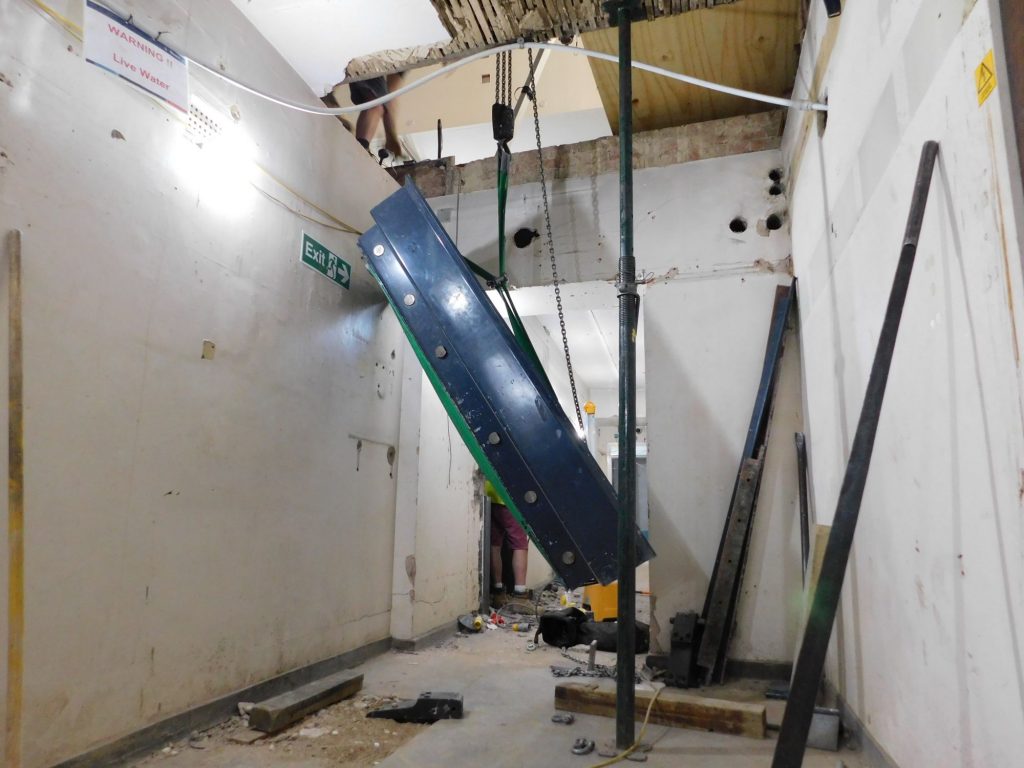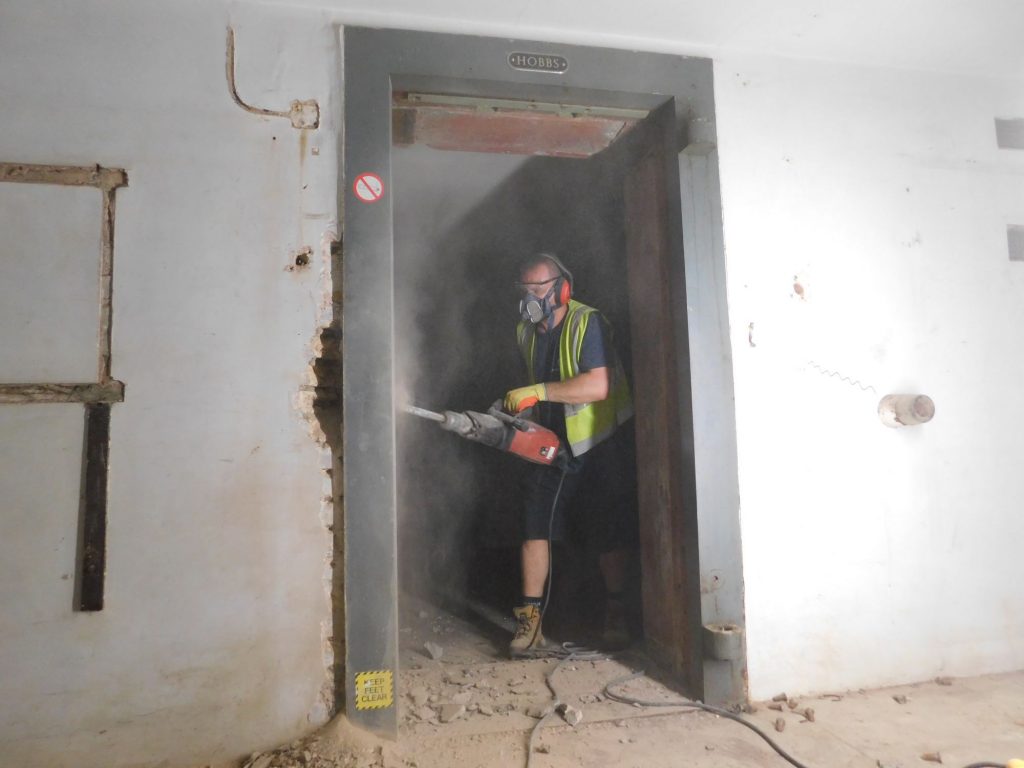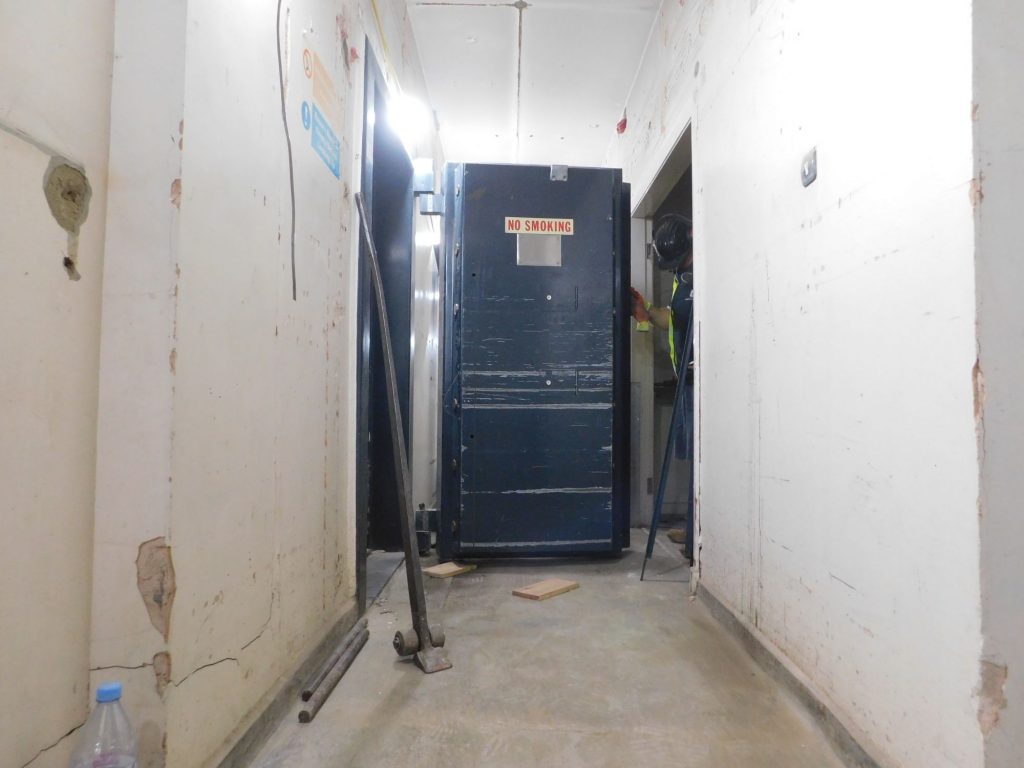Vault Door Removal: Expert Tips
Estimated reading time: 6 minutes
Do you have an old vault in your building that you’d like to remove? It’s important to know that vault door removal and vault removal is a highly specialised task that requires expertise, precision, and the right equipment.
These doors are designed to be virtually impenetrable, making them incredibly heavy and intricately integrated into the building’s structure. Removing them involves navigating challenges such as their size, weight, and secure fittings, this can pose risks to both the building and the people involved without proper planning and safety precautions.
The challenges removing vault doors poses are mostly due to tight spaces or their integration into the building which is often structural. Overcoming these issues may require partial disassembly, specialised compact equipment, or temporary structural reinforcements to ensure safe removal without compromising the building’s integrity.
There are many reasons why a business might need to remove a vault door. Upgrades to modern security systems, renovations to make use of space, or relocating to a new site are some of the most common reasons. Whatever the reason, a professional approach is essential to ensure the process is completed safely and efficiently.
Quick Links:
Complexity of vault removal
Common materials of vault doors
Tools and equipment needed
Expert tips

The Complexity of Vault Door Removal
Vault doors are often impressive feats of engineering, built to provide security and durability. However, these same features make their removal a complex and demanding process. A typical vault door can weigh several tons, requiring specialised equipment such as cranes, hydraulic jacks, and custom rigging systems to handle the immense weight safely. Without the proper tools and expertise, the risks of damage to the building or injury to workers increase significantly.
Vault doors are constructed from materials designed to provide exceptional strength, security, and resistance to tampering or environmental hazards which together make the challenge of removal incredibly difficult.
Common materials used for vault doors include:
- Steel
- Hardened Steel: Used for its high tensile strength and resistance to cutting and drilling.
- Alloy Steel: Offers enhanced durability and heat resistance, often used in fireproof vault doors.
- Reinforced Concrete
- Often combined with steel to provide additional mass and resistance against impact or forced entry.
- Composite Materials
- Layers of various materials (e.g., ceramics, metals, and polymers) are combined to enhance ballistic resistance, fireproofing, or insulation.
- Tungsten or Carbide Alloys
- Used in high-security vaults for resistance to extreme drilling attempts or abrasions.
- Copper or Aluminium Alloys
- Occasionally used for specific functional elements, such as heat dissipation in fire-resistant vault doors.
- Fireproofing Materials
- Specialised insulation or fire-resistant layers, often placed between steel or concrete, to protect contents during extreme temperatures.
- Lead
- Found in older vault doors or those designed for radiation shielding, such as in bank vaults doubling as safe deposit storage near medical facilities.
- High-Density Polymeric Layers
- Used in modern designs for their lightweight properties and ability to enhance overall resistance to specific threats like heat or ballistics.
Adding to the challenge, many vault doors are custom-fitted to their surroundings. This means they are often embedded within walls, floors, or doorframes, making extraction an intricate task. Every removal must be approached with a tailored plan to address the unique integration of the door into the building, ensuring that the process is safe and efficient.
Tools and Equipment for Vault Door Removal
Removing a vault door will require heavy duty and often specialised tools and equipment to handle the immense weight and design.
Here’s a breakdown of the essential tools used in the process:
Cranes and Hydraulic Jacks
-
- Vault doors often weigh several tons, making heavy lifting equipment essential. Cranes are used to safely hoist the door out of its frame, while hydraulic jacks help to manoeuvre and stabilise the door during the removal process.
Disassembly Tools
-
- Large or heavy vault doors require partial disassembly to make them lighter and easier to remove. This may involve carefully detaching components like hinges, locking mechanisms, or interior panels using specialised wrenches, drills, and prying tools.
Precision Cutting Tools
-
- Precision cutting tools like plasma cutters or angle grinders are used to segment the door into manageable pieces. This ensures safe removal while minimising disruption to the surrounding structure.
Rigging Systems
-
- Heavy-duty rigging systems, including chains, slings, and stabilising equipment, can secure the door during lifting and transport, preventing accidents or shifting.
Protective Equipment
-
- Protective padding and barriers are used to shield walls, floors, and other nearby structures from accidental damage.

Expert Tips for Smooth Vault Door Removal
Successfully removing a vault door requires careful planning and execution, it’s not a task you can take on lightly. Here are expert tips to ensure the process is as smooth and secure as possible:
Hire Professionals
Removal of a vault door is a specialised task and sometimes dangerous task – sometimes it’s best left to experienced professionals. Our teams have the expertise, tools, and training to handle the complexities safely and efficiently, reducing the risk of accidents or damage to the building.
Plan for Limited Access
Often vaults are located in difficult places such as basements or even high-traffic areas of a building. Schedule removal during off-hours or low-traffic times to minimise disruption reducing the impact on your business and/or surrounding areas.
Proper Disposal
Once the door is removed, consider how the materials will be handled. Many vault doors are made from metal which can be recycled or repurposed by taking it to a scrapyard. However, getting the door there might be difficult without professional help.
Post-Removal Repairs
Be prepared for potential repairs to the surrounding area after the door is out. Vault doors are often embedded in walls or floors, so removing them may leave behind structural gaps or damage that need attention to restore the space to its original condition.

Vault door removal is a challenging process that demands professional expertise to manage safety risks. From handling heavy-duty equipment to navigating structural complexities, experienced specialists are essential to achieving a smooth and secure removal.
If you’re considering vault door removal, trust the experts at Trident Safes. Our skilled team is equipped to handle every aspect of the process, we have all the equipment required and our knowledgeable team can minimise disruption to your business. We’ve taken on vault removals and installations of all sizes, see our recent projects to find out more including vault removal from ex-bank premises.
Contact us today for a consultation and a tailored quote. Let Trident Safes provide you with a seamless vault door removal experience.




